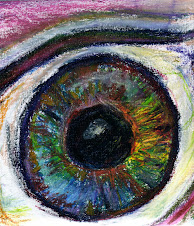Clinical research has established that there is a link between a diagnosis of ADHD and certain vision deficits or delays in children. Many children with ADHD also test positive for a saccadic eye movement deficit. This means that they have difficulty moving their eyes efficiently and accurately from one fixed visual target to another as in going from one word or line to the next on a page of text. Many children with ADHD also test positive for a convergence insufficiency (CI). This means that they are unable to cross their eyes or team them appropriately and may experience words moving, blurring, or doubling on a page. They may get headaches when reading or they may, without ever being aware of it, suppress the vision in one eye. Many children with ADHD also test positive for accommodative infacility (AI) which means that they have trouble adjusting their focus when looking from a near image to a different image in the distance.
The good news is that all three of these visual diagnoses can be addressed with a program of in-office vision therapy under the supervision of a developmental optometrist. So, if your child has been diagnosed or if you are being encouraged to obtain a diagnosis of ADHD, don't stop there. Arrange an appointment for your child to receive a comprehensive eye exam by a developmental optometrist who incorporates vision therapy into their practice. If the eye doctor finds that your child has any of these visual problems, follow through with the program of vision therapy. To find a developmental optometrist in your area, plug your zip code into the search box at www.covd.org.
You can read more about this in: Borsting, Eric; Michael Rouse, and Ray Chu. Measuring ADHD behaviors in children with symptomatic accommodative dysfunction or convergence insufficiency: a preliminary study. "Optometry", Volume 76. Number 10. October 2005
Tuesday, October 20, 2009
Before you Medicate, Investigate- ADHD & Vision
Subscribe to:
Post Comments (Atom)





No comments:
Post a Comment